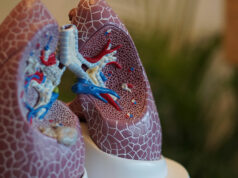“Some fifteen years ago, I was very passion-driven. I had a very successful career as a sales and marketing director of a multinational company. I was very young. They called me the ‘golden boy.’ And then, psoriasis started,” said Josef De Guzman, Psoriasis Philippines (PsorPhil) president, who shared what it was like after being diagnosed in 1996. “It’s not easy,” he continued, adding that he went from “being a star in the industry” to being shunned and discriminated against.
Mr. De Guzman is just one of the two million Filipinos living with psoriasis. Some of them try to hide their condition, others live like hermits. Some have attempted to commit suicide.
According to a 2017 online survey with 645 respondents conducted by PsorPhil, 40% of Filipinos suffer from moderate to severe psoriasis. Their career and social lives are affected: 27% are bullied, and more than 50% are stared at in public.
SCALY PATCHES
According to www.psoriasis.org, “Psoriasis is an immune-mediated disease that causes raised, red, scaly, patches to appear on the skin. It typically affects the outside of the elbows, knees or scalp, though it can appear on any location.”
Furthermore, up to 30% of patients with psoriasis have, or will, develop psoriatic arthritis. In Asia, that percentage goes down to 15%. Philippine Rheumatology Association (PRA) president Dr. Bernadette Heizel Manapat-Reyes expounded on the symptoms and treatment of psoriasis and psoriatic arthritis, the symptoms of which include pain, stiffness and irreversible joint damage.
Aside from being autoimmune diseases, psoriasis and psoriatic arthritis are also systemic diseases because they increase the risk for diabetes, hypertension, and metabolic diseases.
When a person with psoriasis begins to develop joint pains, doctors may primarily consider psoriatic arthritis. “It’s polygenic. Several genes are involved. They get switched on later in life for a lot of people. Sometimes, they get switched on earlier. Switching is an epigenetic phenomenon wherein you have an active gene that gives you the susceptibility,” Dr. Manapat-Reyes explained.
“The cardinal symptom will be pain in the joint. It can be pain in the hip. It can be pain in the butt. We have some patients who would manifest with swelling of the entire finger or toe (dactylitis), or sometimes they get swelling in the heel (enthesitis) so it’s the tendon that gets inflamed,” she added.
“Our main goal is to prevent erosions or permanent damage to the joint,” Dr. Manapat-Reyes continued. “We use a lot of drugs aggressively early. Once the patient is soon to remission, then we start tapering off medication.”
Patients may undergo topical treatment (creams and ointments) upon prescription, oral treatments (tablets and capsules), and phototherapy (regular exposure to UV light under medical supervision). For patients with severe psoriasis and psoriatic arthritis, biologics (injection or intravenous infusion) and systemics (oral or by injection) may be taken upon prescription.
INITIATIVES FOR PATIENTS
In line with their mission to reach out to patients, Philippine Dermatological Society (PDS) president Dr. Ma. Angela T. Medina-Lavadia highlighted the organization’s participation during World Psoriasis Day through the PsorWalk, and the Hug Me campaign to prove that the disease is not contagious. The organization is also working on a bill, which it will submit to congress, that will “put forth the benefits that are necessary for psoriasis patients.”
She added that there are 11 PDS accredited dermatology training programs around the country where patients with skin diseases and psoriasis can undergo free evidence-based medical treatment. They also have psoriasis clubs as support groups. In cooperation with PsorPhil, PDS helps with community-based psoriasis clubs with PDS dermatologists as advisers.
‘ASK YOUR DERM’
Novartis Healthcare Philippines launched the “Ask Your Derm” website in order to serve patients. Although it isn’t live yet, the website contains information about the disease as well as inspirational stories that show psoriasis patients that achieving clear skin is possible. The website includes a PDS directory, videos about coping with the disease, and advice from doctors. According to Novartis Healthcare Philippines, Inc., Chief Scientific Officer Dr. Francis Victor M. Domingo, the website will go live “as soon as possible.”
Moreover, Dr. Domingo also said that Novartis is committed to provide Filipino doctors with innovative medical education through VivindaTV, a virtual conference platform that provides local rheumatologists access to the American College of Rheumatology Annual Congress.
MOVING FORWARD
Psoriasis is not fatal. It is not contagious. Mr. De Guzman advises other patients: “Don’t lose hope. Just keep moving. I think this condition is given to us for a reason. There is a message that we need to discover.”
His diagnosis led him to form PsorPhil, an online support group for patients, in 2005. He currently sits as the organization’s president. PsorPhil has over 20 chapters across the country. In 2012, he launched Psoriasis Asia + Pacific.
World Psoriasis Day is celebrated on October 29 to spread awareness and provide access to treatment to psoriasis and arthritic psoriasis. – M. P. Soliman
For information visit psorphil.org and www.novartis.com.



